Plant Your Hardscape for Unexpected Green
http://decor-ideas.org 07/15/2014 19:13 Decor Ideas
An exceptional garden employs the unexpected to tell its story. The ordinary is nowhere to be found. The author of this kind of garden is attentive to every detail to create a one-of-a-kind experience.
By contrast, hardscape is often too predictable and, may I say, boring. Suburbia is bursting with concrete patios edged with planting beds and matching utilitarian sidewalks to move visitors uneventfully from place to place. Perhaps this describes your space. Let’s look at ways to infuse your yard with creativity and life. Let’s cultivate your hardscape.
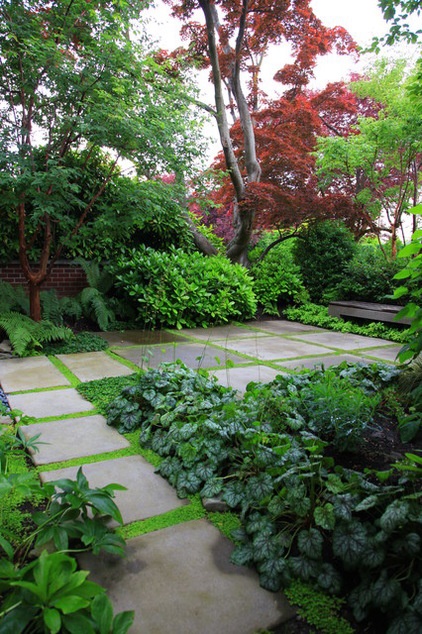
Soften your hardscape. Most gardens needs some hardscape; it makes the space inviting and functional. Sensitivity to the environment may dictate a philosophy that less is more. Existing concrete may be scored and partially removed to interplant for a softer effect.
If concrete is your substrate of choice for a new space, consider poured-in-place pavers like the ones shown here. In this garden the poured concrete pavers interplanted with miniature brass buttons (Leptinella gruveri, zones 7 to 9, find your zone) establish early on that there is a thoughtful coexistence between man and nature.
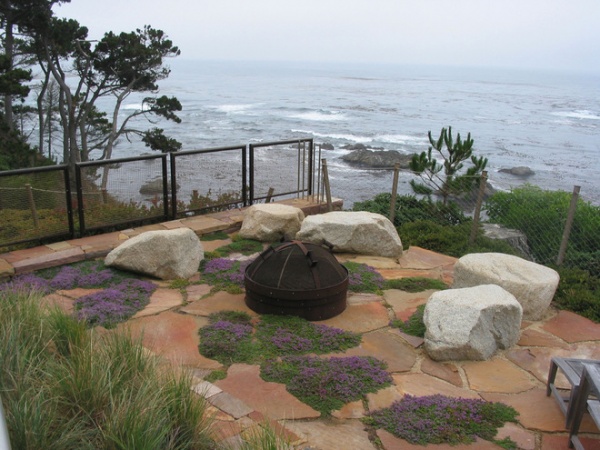
Interplant hardscape to establish traffic patterns. Not only does interplanting soften harsh lines, but it can also slow the visitor’s gait and establish traffic patterns in large areas of hardscape. People will generally avoid stepping on plants, preferring to be ushered to destinations by subtle living reminders.
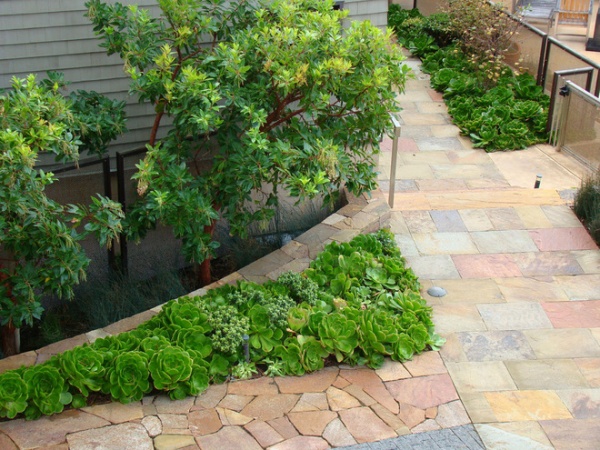
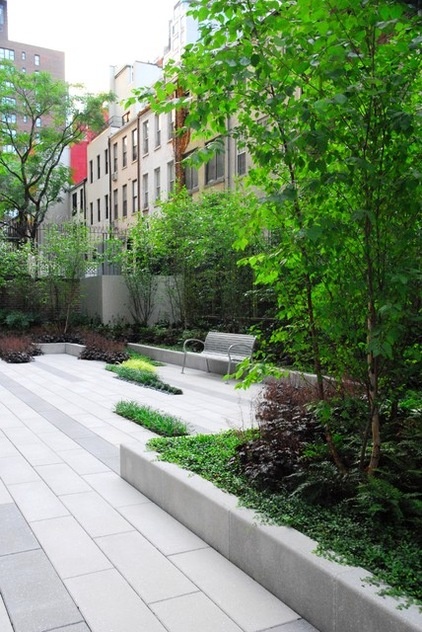
Add interest by designing unconventional beds. Planting beds generally abut areas of hardscape. Why not create unexpected interest by working planting areas into your hardscape? To do this safely, plan for extra-wide pathways and appropriate lighting.
Since hardscape tends to absorb and reflect heat and possibly harsh light, you may have the opportunity to take advantage of newly created microclimates to expand your palette with plants such as these aeoniums (zones 9 to 11). Other succulents may be substituted in colder climates.
The unconventional composition of rectangular planting beds in this terrace adds immeasurable interest. The chosen plantings of coral bells (Heuchera cvs, zones 4 to 9) and lilyturf (Liriope cvs, zones 6 to 10) pull from the palette of the surrounding beds, establishing continuity while softening the hardscape.
Consider also mimicking the shape of your pavers with the shape of your beds and planters.
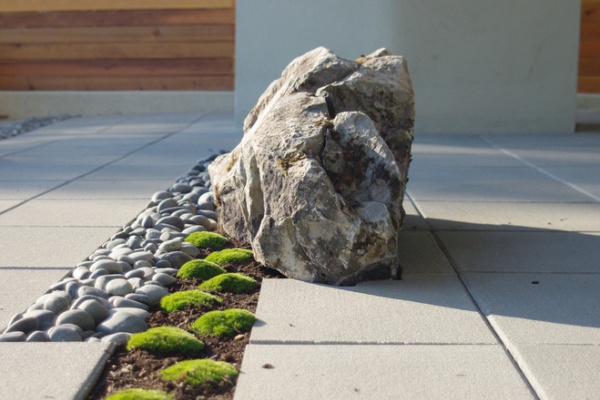
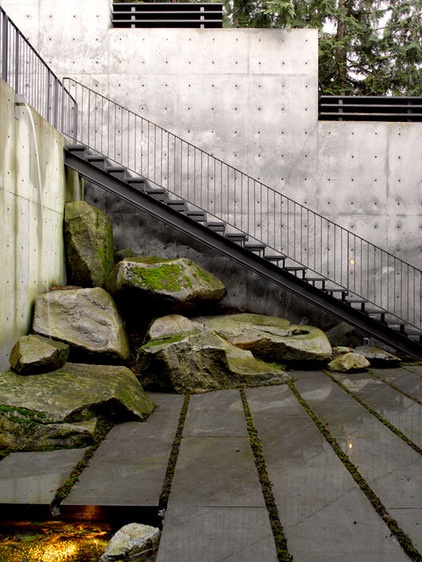
Taking things a step further, these boulders have become a substrate for a moss garden. They relate to and break the lines of the pavers. Additionally, they soften and bring three-dimensional interest to the corner of this space. As the moss garden matures, it will soften the area even more.
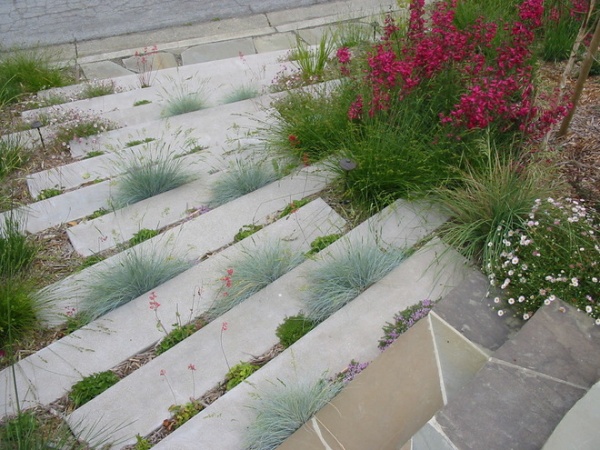
Plant between steps. Here, low-growing blue fescue and perennials are planted between steps. They effectively soften the steps, as the steps become a garden in themselves. (Consider the safety of plantings like these in your garden before implementing them.)
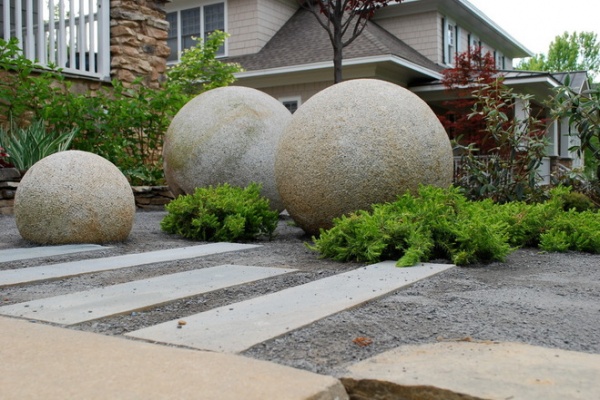
Plant directly into your terrace. If your terrace or wide path is constructed of gravel, mulch or crushed stone, consider planting shrubs or trees in it. Doing so will cause the plant to be viewed as a sculptural element. These Golden Pacific shore junipers (Juniperus conferta ‘All Gold’, zones 6 to 9) become a part of a sculptural composition in this garden.
A wide variety of shrubs, trees, grasses and perennials may be used this way. Dig a large hole, fill it with good soil, add the planting and cover the hole with a shallow layer of substrate. Be advised that certain substrates can change the pH of the soil. Crushed stone may increase the pH of the soil; mulch may lower it. Choose your plants accordingly.
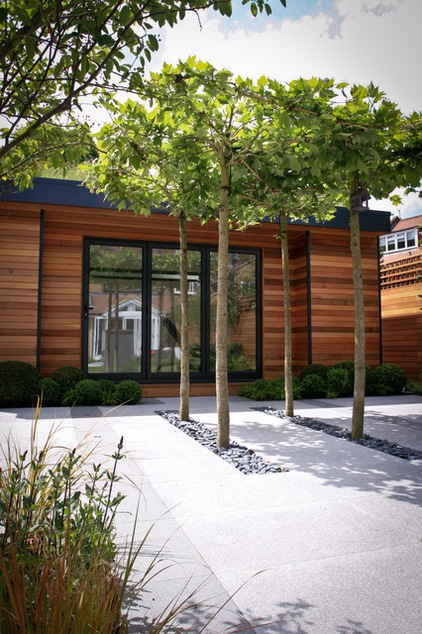
An allée of pollarded trees makes a bold statement in this garden. Allées are usually used as a formal element, so this one contrasts perfectly with the contemporary style of the home.
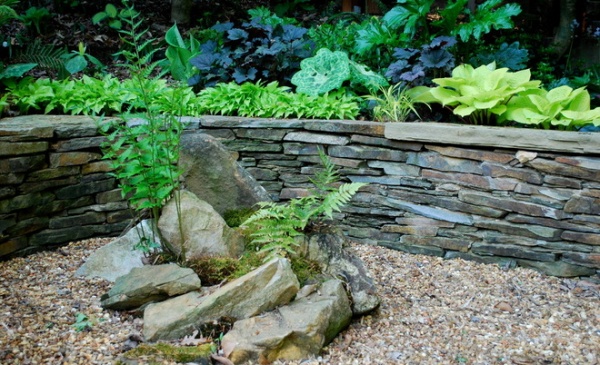
Create your own planter. Ceramic pottery has become an expected accessory on patios and terraces. Why not create a unique planter that ties into your hardscape?
I designed and built this naturalistic free-form planter in my personal garden several years ago, planting it with ferns and moss. It is both unexpected and appropriate, bringing the surrounding woodland garden into the terrace area. Use your imagination to construct something that speaks both to your aesthetic and your personality. Your garden will be better for it.
More: 6 Suggestions for Harmonious Hardscaping
Related Articles Recommended












